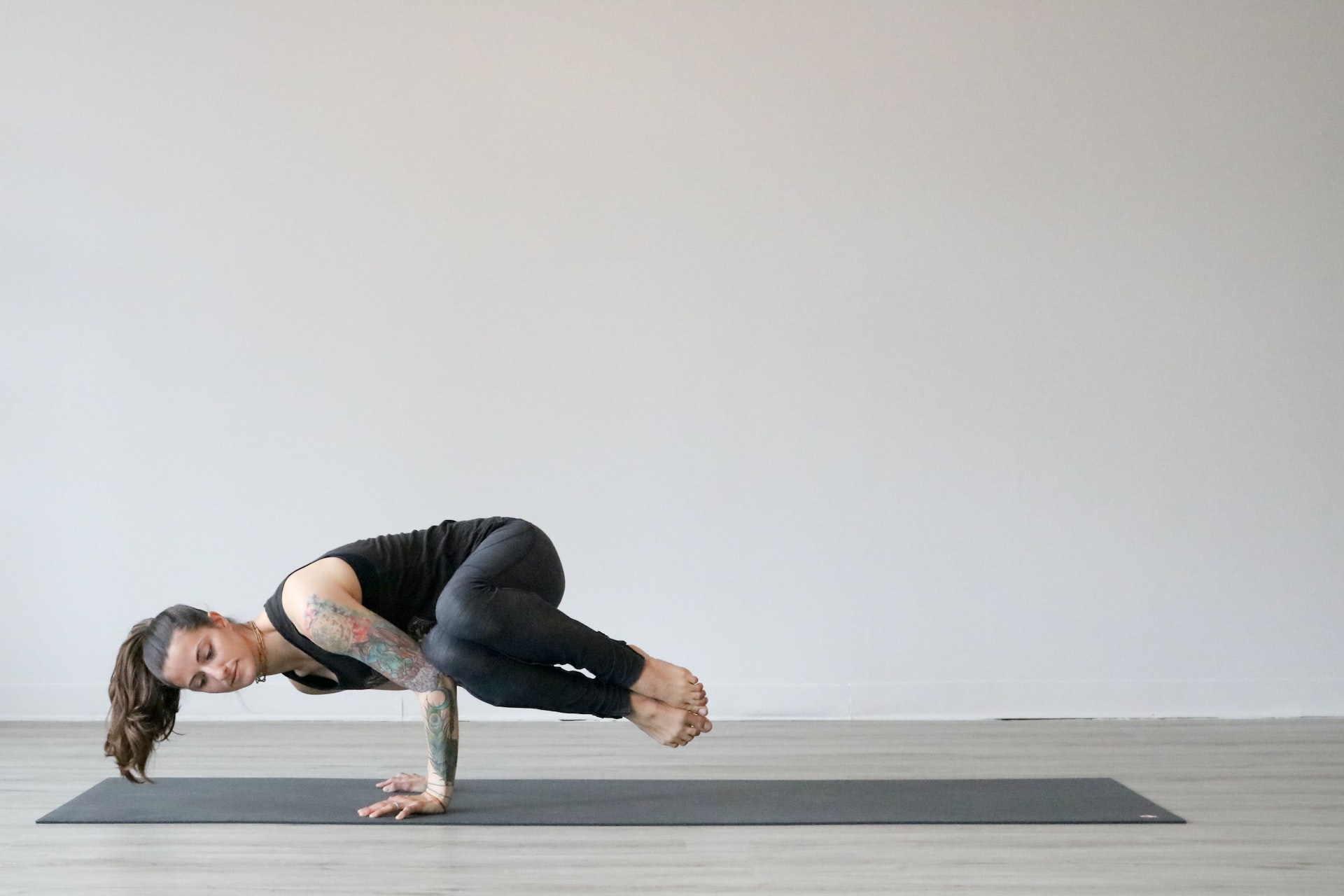Wellness • 02/14/2023
What Is Vinyasa Yoga — And 6 Reasons to Try It

Revivalist is a reader-supported endeavor and our posts may contain affiliate links. When you buy through links on our site, we may earn an affiliate commission.
Do you want to get better at going with the flow? Perhaps you should try vinyasa yoga!
Vinyasa yoga is sometimes called “flow” yoga because you keep your body in fluid motion throughout the class duration. Instead of holding long, static stretches, youm go from one to the other with transitional moves in between to keep your heart rate elevated.
Where did this style originate, and what are its benefits? Here’s what you need to know about vinyasa yoga — and six reasons to start your practice.
A Brief History of Vinyasa Yoga
Vinyasa yoga is one of the earliest forms of this ancient practice. It builds off the principles of Ashtanga, which has roots in antiquity and became popular in the early 20th century from the teachings of T. Krishnamacharya. He passed on his knowledge to Sri. K. Pattabhi Jois, who brought the practice to the west.
Unlike Ashtanga, which follows a fixed series of poses each time you practice, vinyasa includes room for variety. Your guide will change up the movement patterns, challenging you to learn the names of various asanas and testing your neuroplasticity.
Vigorous Exercise With a Meditative Purpose
One of the defining features of vinyasa yoga is the union of your breath and body movements. You’ll notice your guide instructing you when you should inhale and exhale. Although it’s understandable that you might not get it perfectly at first — some classes can leave you panting a bit — your goal is to coordinate the two. Doing so helps you reach a meditative state.
Vinyasa classes are typically more vigorous than Hatha and decidedly more so than Yin or restorative practices. You might see some classes labeled “Hatha vinyasa.” This term simply means that your guide uses a combination of flowing movements and static holds.
Pure vinyasa yoga classes keep you moving until you reach savasana at the end. You’ll burn a significant number of calories — it’s one of the best types for this purpose. An hour-long session melts away nearly 500, depending on your size and how hard you push yourself.
6 Amazing Vinyasa Yoga Benefits
Now that you know what vinyasa yoga is, why should you give it a try? Here are six solid reasons to begin your practice today.
1. You Get an All-in-One Workout
Do you struggle to fit in strength training, cardiovascular conditioning and flexibility work into your weekly routine? It’s understandable — many people are busier than ever, and their time is at a premium.
Vinyasa yoga is the perfect all-in-one workout for people on the go. You combine flexibility and cardiovascular training. Additionally, moves like chaturanga help you build muscular strength and endurance.
You can also take vinyasa yoga on the road. It’s friendly to do in your hotel room — you might even be able to borrow a mat from the front desk or the fitness center. If you can’t find a studio, YouTube is a glorious resource, and it’s free.
2. You Reduce Your Risk of Heart Disease
Heart disease remains the number one killer of men and women globally. Vinyasa yoga is the ideal form of cardiovascular conditioning for several reasons.
- It’s low impact: People with arthritis and other painful joint conditions can find aerobics painful. Vinyasa yoga is low-impact, relieving the pressure on creaky knees and ankles.
- It unites breath and body: Vigorous cardiovascular exercise can sometimes increase stress levels, especially if you go long and hard. Vinyasa yoga, conversely, keeps you relaxed while working your heart by uniting your breath and body, inviting a sense of calm even as you raise your heart rate.
- It’s welcoming and non-competitive: Some people shy away from the gym because they feel pressured to compete. Yogis are more accepting of those of all shapes, sizes and ability levels — and you’re more likely to stick with an exercise program if you feel warmly welcomed each time you attend class.
3. You May Lower Your Dementia Risk
Researchers investigated the impact of various activities on dementia risk. While some, like doing crossword puzzles, had a modest effect, one emerged the clear winner — dance. Scientists hypothesize that the combination of mentally following complex movements while keeping your body in motion to create the right environmental conditions for learning provides the needed boost.
Vinyasa yoga shares a lot in common with dance. It’s sometimes even more challenging — how do you follow your guide when you’re bent in a forward fold, facing the back of the room? It could turn out to be an equal partner in reducing your dementia risk.
4. You Learn How to Breathe Through Struggles
You can’t always control the stressors you encounter in life. However, you can manage how you react to them — which can make all the difference between a minor setback and a disaster.
Vinyasa yoga teaches you to manage stress through your breath. As you put yourself in increasingly complex postures, you use your breathing patterns to calmly direct your energy in the direction you want it to go. The yoga studio is the perfect rehearsal stage for the play we call life.
5. You Form a More Intimate Connection With Your Body
Many people today feel disconnected from their bodies. Maybe your work demands you use your intellect to the neglect of your physical needs. Alternatively, you might have trauma that causes you to dissociate from your physiological sensations.
Yoga helps you rebuild the mind-body connection. It helps you recognize what’s happening physically and how it impacts you emotionally and mentally. It’s also incredibly curative, using gentle, nurturing care to repair the relationship with your body that may have been damaged by the world’s realities.
6. You Ease Oodles of Stress
Stress contributes to multiple diseases. For example, it can cause you to eat too many high-fat, high-sugar foods that pad on unwanted pounds and increase your Type 2 diabetes risk.
Vinyasa yoga is a fantastic stress-buster. It lets your body’s fight-or-flight system do what it was intended for when under pressure while using your breath to promote a deep sense of calm.
Vinyasa Yoga for Beginners
Is vinyasa yoga good for beginners? It’s recommended that you have some experience with yoga before trying it. Vinyasa typically works up a sweat and stretches your muscles more than a beginner-level yoga class.
If you’ve taken beginner yoga classes and want more of a challenge, vinyasa may be the next step for you. Be sure to do your research before signing up.
What Is Vinyasa Yoga?
Vinyasa yoga is one of the most popular styles today. It combines a fabulous cardiovascular and flexibility workout with breathwork that leaves you feeling calm and revitalized.
This mind-body practice can improve your health in many ways. Grab your mat and get started on your vinyasa yoga journey today.
Subscribe to Our Weekly Newsletter
We would love to connect deeper with you!


